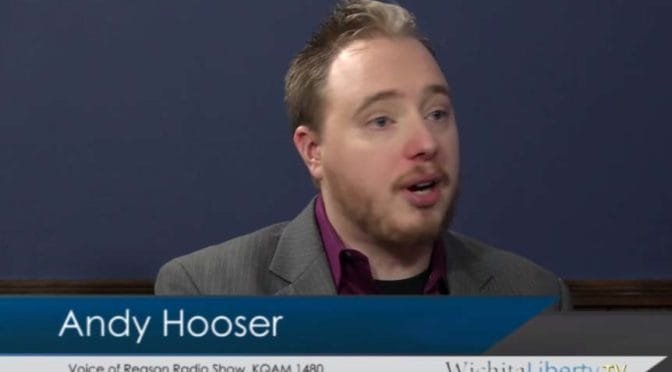Tag: Sam Brownback
-

WichitaLiberty.TV: What Was Really the Matter with the Kansas Tax Plan
Dave Trabert of Kansas Policy Institute joins Bob and Karl to discuss his new book What Was Really the Matter with the Kansas Tax Plan –- The Undoing of a Good Idea.
-

What Was Really the Matter with the Kansas Tax Plan
Tax relief opponents have repeatedly pointed to the 2012 Kansas tax plan as their primary example of why tax cuts do not work. But, other states like North Carolina, Indiana, and Tennessee contemporaneously, and successfully, cut taxes. What was different about the Kansas experience?
-

WichitaLiberty.TV: Radio Host Andy Hooser
Radio Host Andy Hooser of the Voice of Reason appears with Bob Weeks to discuss issues in state and national political affairs.
-

Voting to raise taxes in Kansas
Printable tables of voting on legislation that raised taxes in Kansas.
-

Kansas bills deserve the veto pen
Kansas Governor Sam Brownback may exercise a line item veto over any item in the just-passed budget and school spending bills. Here are a few ideas that deserve the veto.
-

The yardstick for the Kansas experiment
A politician’s boasting should not be the yardstick for policy.
-

In Kansas, the war on blight continues
Kansas governments are trying — again — to expand their powers to take property to the detriment of one of the fundamental rights of citizens: private property rights.
-

Again, KPERS shows why public pension reform is essential
Proposals in the Kansas budget for fiscal year 2018 are more evidence of why defined-benefit pension plans are incompatible with the public sector.
